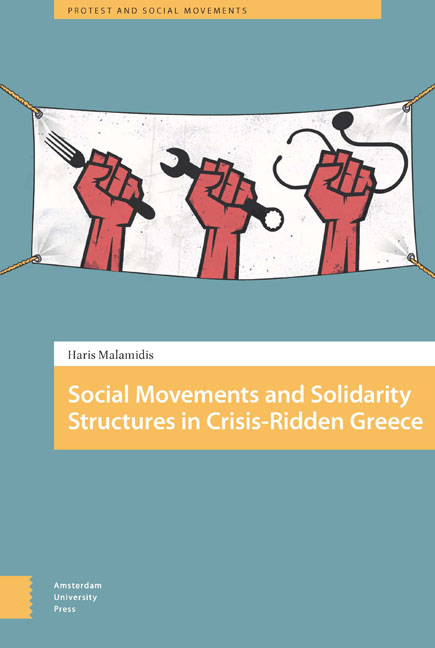Book contents
1 - Theorizing the Process of Boundary Enlargement
Published online by Cambridge University Press: 25 November 2020
Summary
Abstract
This chapter demonstrates the theoretical underpinnings of the book. By discussing the framework of contentious politics, the chapter shows its advantages for analyzing complex realities and its ambition for a dynamic approach. The absence of an explanatory concept with regards to the changes over the movements’ distinctive boundaries, nevertheless, allows us to introduce the process of boundary enlargement; a dynamic process which shows how the extension of boundaries allows social movement organizations to move beyond their delimited cognitive and structural perimeter, and adopt new practices and repertoires. Furthermore, the chapter underlines the importance of the meso-organizational level and the use of social movement scenes, and provides justifications for the book's focus on the factors of organizational structure, resources and identity.
Keywords: Contentious politics framework; Boundary enlargement process; Social movement organizations; Organizational structure; Resources; Collective identity
This research argues that the recent economic crisis has enabled the facilitation of a boundary enlargement process, which has affected social movement organizations (SMOs) both internally, in terms of their internal operation, but also externally, regarding their relationship with institutional actors. In order to demonstrate this, we base our explanatory framework on the literature of social movements, with particular focus on the Contentious Politics approach.
The study of processes and mechanisms in social movement studies dates back to 2001, when McAdam, Tarrow and Tilly introduced the Dynamics of Contention. Since the 1980s, frame scholars criticized the static model of resource mobilization by suggesting a dynamic understanding of mobilization, arguing that the ‘decision to participate over time [is] thus subject to frequent reassessment and negotiation’ (Snow et al., 1986, p. 467). Despite subsequent efforts to transform the static models of resource mobilization theory and the political process approach into more dynamic accounts (Tarrow, 1998), Dynamics of Contention was the first work to introduce a comprehensive theoretical framework.
Dynamics of Contention aimed to combine structural, relational and cultural approaches to politics. In order to achieve this, the authors suggest two steps. First, to approach social movements as one aspect of contentious politics, equal to strike waves, riots, civil wars, revolutions as well as nationalist mobilizations and processes of democratization.
- Type
- Chapter
- Information
- Publisher: Amsterdam University PressPrint publication year: 2020



